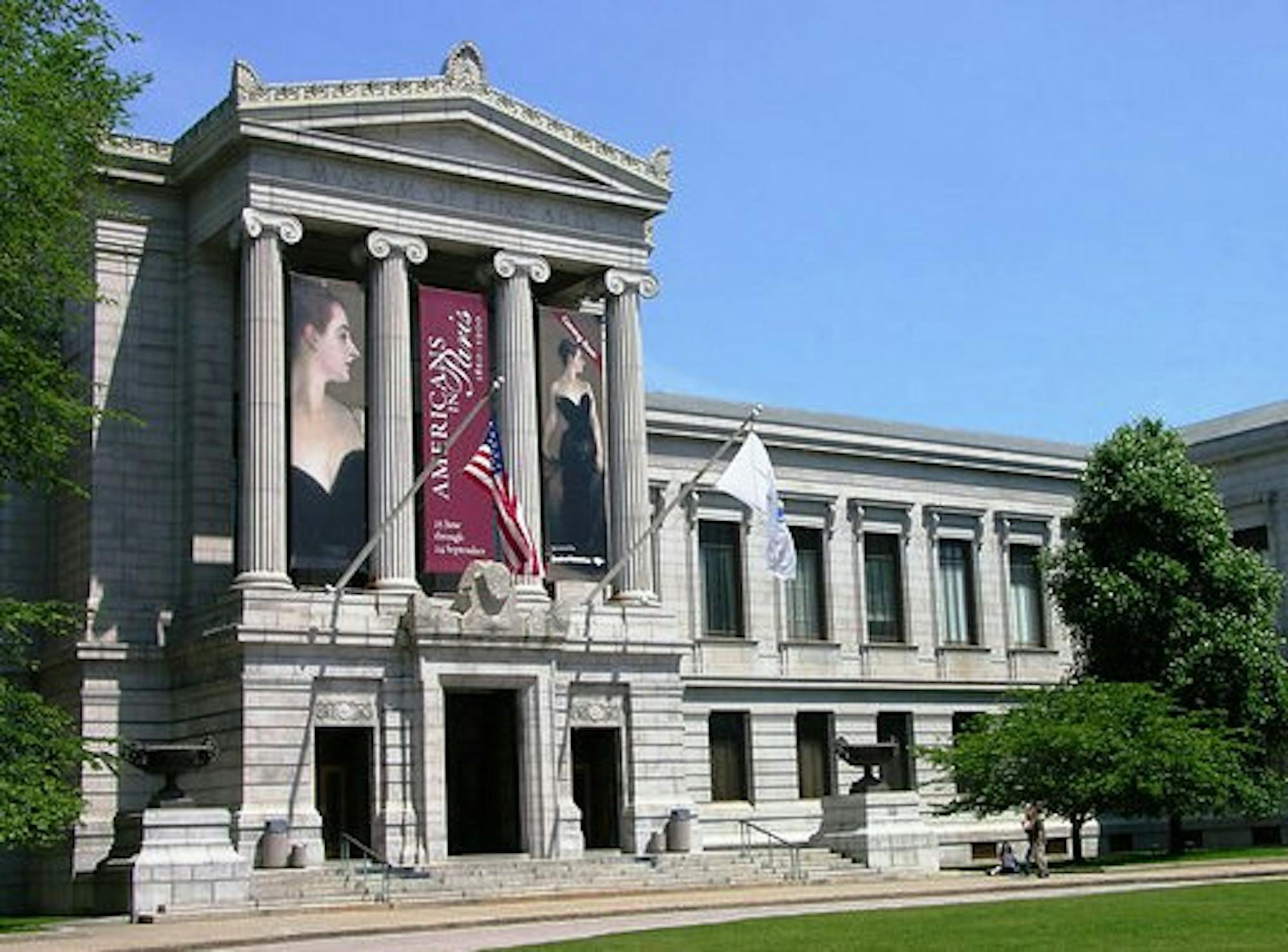In recent years, followers of the art world have seen increasing initiative to include artists and subjects of marginalized communities. Yet, we are still more inclined to see inclusive art as fringe or intentionally diverse. By labeling these pieces as “monuments,” the Museum of Fine Arts in Boston (MFA) is attempting to change that perception. “Monuments to Us” runs from Jan. 27 to April 8 and is largely made up of the MFA’s permanent collection. It is an amalgamation of pieces by people traditionally underrepresented in the arts. The central question, according to the exhibit, is, “Whose stories are memorialized, and whose are erased?”
Most of the works are portraits of some sort, ranging from plaster casts to paintings to photographs. The variety of faces, as well as some interesting backstories, make this exhibit seem distinctly personal. The first eye-catching piece is "Enocio" (2003-06), a portrait by Sedrick Huckaby. Huckaby is an African-American painter who captures the nuances of his cousin with impasto paint layered so thick in places that Enocio, Huckaby’s cousin, is rendered literally three-dimensional.
Huckaby, a Texas native, comes from a family of quilters, and this legacy of storytelling through art influences his painting. But don’t mistake his art or subjects as humble. The artist has said that his subjects, made up of friends and family from his own community, “[are] important enough to make a monument out of them.”
The personal influence behind the art in “Monuments” continues on through other mediums as well. For example, the exhibit also includes a part of photographer Catherine Opie's “Portrait Series” (1993-96). The photo depicts Opie’s friend Christopher Lee, a self-described “butch dyke,” dressed in a military uniform and carrying a sword. This photography project was Opie’s way of giving dignity to her friends “who are often denied it because of the way they express their gender and sexuality.”
Sexuality is another major theme of the exhibit. One of the most moving pieces is sculptor John Ahearn's acrylic paint on plaster piece depicting two brothers, “Raymond and Freddy” (1992). Two things are clear at first glance: the battered, emaciated figure of Freddy, who was suffering from AIDS, and the open love between the two brothers. Throughout the exhibit, as in this piece, warmth is the bottom line of struggle.
The variety of mediums is one of the biggest strengths of “Monuments to Us.” There are paintings, sketches, photographs and interactive sculptures, which make the whole experience seem universal and far-reaching. The exhibit's location is also effective. Instead of being confined to a gallery or room, it is spread over a small corner of the museum between the photography galleries, the contemporary art wing and a café. People who haven't intentionally gone to see the exhibit are constantly walking in and out, inevitably stopping to look around. It seems as if the curators wanted to put the exhibit in a crowded, unexpected area to illustrate how the flow of people and all their different backgrounds mirror the different demographics represented.
And yet, something about the exhibit feels unfinished. The communities represented are given their due diligence, mainly people of color and queer people. Others focus on women, low-income communities and people with disabilities, but these make up a smaller portion of the exhibit. In the entirety of the MFA’s permanent collection, there's certainly art representing more identities: transgender people, people from the Middle East and Asia, people with mental disabilities. This is not to say that the exhibit has handled its subject badly; rather, it could have been taken further. It would’ve been interesting if “Monuments" had stretched into other corners of the museum in one continuous, flowing exhibit. That would give the exhibit more literal exposure and allow the museum more space to add more pieces.
The curators of the exhibit wrote that they were inspired by the recent controversy over statues of Confederate leaders in the South. While those all over the country have questioned who is and isn’t deserving of a memorial, the MFA has decided to answer that question in the context of representation in art. All of the pieces in the exhibit are unique and moving monuments to different paths of life. However, for a proposed answer to such a broad question, the exhibit was rather tucked away and scant. It is clear that all of the featured artists wanted to create their own monuments of dignity and even grandeur; in both placement and scale, however, the MFA has given an underwhelming platform. The exhibit is undeniably moving, but it leaves its viewers wanting more.
Summary
"Monuments to Us" is a well-organized, detailed exhibition of marginalized voices in the arts, but its broad message is undercut by the exhibit's limited scope.
3.5 Stars






